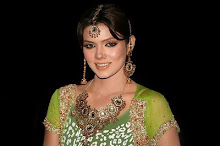



 Rabble rousing youth, incited by those who lost big in the Iranian Presidential Election of June 12, are on the prowl in the streets of Tehran. These young people have nothing to lose but their naiveté. Many of them have practically no stake in Iran—no jobs, no operty, nothing…. Thus, they have chosen to eschew the orderly electoral process and elevate political disorder as an expression of their desire for democracy. But democracy is rational and orderly. It is expressed through the ballot box, not demonstrations designed to topple a duly elected government, and definitely not something that can be achieved through street action.
Rabble rousing youth, incited by those who lost big in the Iranian Presidential Election of June 12, are on the prowl in the streets of Tehran. These young people have nothing to lose but their naiveté. Many of them have practically no stake in Iran—no jobs, no operty, nothing…. Thus, they have chosen to eschew the orderly electoral process and elevate political disorder as an expression of their desire for democracy. But democracy is rational and orderly. It is expressed through the ballot box, not demonstrations designed to topple a duly elected government, and definitely not something that can be achieved through street action.Thirty years ago we beheld the precursor of political disorder almost similar to what is happening now in Iran . In 1979 the man behind the disorder was the Ayatollah Ruhollah Musavi Khomeini; today the leader of disorder is Hossein Mousavi. Ayatollah Khomeini’s revolution sought to and succeeded in dislodging the dictatosrhip of Shah Mohammad Reza Pahlavi, who ruled Iran from 1941-1979. It is not clear who Mousavi wants to overthrow after losing the vote in a free and open election.
Unlike in 1979, political conditions in Iran are dramatically different in 2009. Elections, the political ritual of change, are in place; the military is not a secular institution and is controlled by the religious leaders. The disgruntled have neither a stake in the economy nor the theocracy. And, more importantly, Iranians are not equipped for democracy. This last point is palpably clear with respect to how the Iranian people deify their leaders. Rewind to 1979 and you will find similar political images repeated in 2009. In 1979 it was the Ayatollah Khomeini who was deified as savior; in 2009, it is Hossein Mousavi.











No comments:
Post a Comment